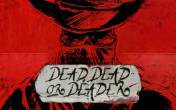
Blackjack has always stood out as a game of skill and strategy, offering players a tantalizing mix of chance and control. Unlike purely luck-based games like roulette or slot machines, blackjack allows sharp minds to influence the outcome through calculated decisions. This unique aspect has long made the game a favorite among gamblers seeking an edge.
The concept of "advantage blackjack" takes this appeal to the next level. Advantage players, often armed with a deep understanding of mathematics and human psychology, use legal strategies to gain a statistical edge over the casino.
From the early pioneers who developed card counting systems to modern teams employing advanced techniques, these players have rewritten the rules of engagement between gamblers and casinos.
This article from Casinoz unveils the fascinating history of advantage blackjack, tracing its evolution from a simple card game to a battleground of wits and innovation. We’ll explore the groundbreaking strategies, the daring exploits of legendary players, and the cat-and-mouse game between casinos and advantage players. Along the way, we’ll uncover how blackjack became more than a game—it's a symbol of intellect, perseverance, and the eternal quest to beat the odds.
The Origins of Blackjack Advantage Play
Before the days of advanced card counting systems and sophisticated team play, blackjack was primarily seen as a game of chance. However, even in its early history, observant players and mathematicians recognized that it wasn’t purely luck that determined the outcome of a hand. The game’s structure, where dealt cards affected the odds of future outcomes, hinted at the possibility of gaining an edge through strategy.
The origins of advantage blackjack can be traced back to the 19th century when the game was still evolving into its modern form. Early versions, such as "Twenty-One," offered no formal strategies, but experienced players began to notice patterns and adjust their decisions accordingly. These rudimentary methods laid the foundation for more systematic approaches in the 20th century.
One of the first major breakthroughs came with the development of the "basic strategy." In the mid-1900s, mathematicians began using computational tools to analyze blackjack hands and determine the optimal way to play any given situation. These studies showed that by making decisions based on probability rather than intuition, players could significantly reduce the house edge.
The publication of early strategy guides signaled a shift in how blackjack was approached. Players who once relied on luck now had access to data-driven advice, empowering them to take on the casinos with newfound confidence. Though rudimentary by today’s standards, these early efforts were the seeds of a revolution that would transform blackjack into a game where skill could outmatch chance.
This quiet evolution set the stage for the next major leap: the advent of card counting. Building on the foundational ideas of probability and strategy, a new wave of innovators would soon turn blackjack into a contest of mathematical prowess.
The Birth of Card Counting
The turning point in the history of advantage blackjack came in the early 1960s, when a mathematics professor named Edward O. Thorp forever changed the game. Using computer simulations and probability theory,
Thorp developed a groundbreaking system to track the changing odds in blackjack. His work, published in the revolutionary book Beat the Dealer in 1962, introduced the world to card counting and proved that players could consistently gain a statistical edge over the house.
How Card Counting Works
Card counting relies on the premise that certain cards favor the player while others favor the dealer. High cards (like 10s and aces) increase the player’s chances of hitting blackjack and achieving higher payouts, while low cards are more advantageous to the dealer, helping them avoid busting. By keeping a running count of these cards as they are dealt, a skilled player can adjust their bets and decisions based on the remaining composition of the deck.
Thorp’s original system, known as the "Ten-Count System," was complex but effective. It required players to calculate probabilities for each hand based on the cards already dealt. This system laid the groundwork for more streamlined counting methods, making advantage play more accessible to the average gambler.
Impact of Beat the Dealer
When Beat the Dealer hit the shelves, it became an instant sensation. The book didn’t just explain the theory behind card counting; it provided practical step-by-step instructions for players. For the first time, gamblers had proof that blackjack could be beaten with skill, not luck.
Casinos initially dismissed Thorp’s findings as impractical, believing no one could master such a complicated system. However, as players began to implement his techniques successfully, the casino industry quickly took notice.
The Card Counting Revolution
Thorp’s work inspired a new generation of blackjack enthusiasts to explore and refine card counting. Gamblers began experimenting with simplified systems, such as the Hi-Lo count, which made tracking cards easier while maintaining effectiveness. These innovations democratized advantage play, enabling a broader audience to try their luck against the house.
The birth of card counting not only marked a new chapter in blackjack’s history but also sparked a cultural phenomenon. Casinos scrambled to implement countermeasures, while players honed their skills to stay ahead. What had once been a casual game of cards had now become a high-stakes battle of intellect—a battle that would only intensify in the decades to come.
The Rise of the Blackjack Teams
As card counting became more popular, a significant challenge emerged: individual counters, even highly skilled ones, faced limitations. Casinos began implementing countermeasures like frequent shuffling, banning players suspected of counting, and using surveillance to track skilled players.
To overcome these hurdles, gamblers began to organize into teams, combining their talents and resources to maximize their edge and evade detection.
The Origins of Team Play
The idea of team play is widely attributed to Al Francesco, a blackjack innovator who developed the “Big Player” strategy in the 1970s. Francesco’s method involved a team of counters discreetly tracking the count at multiple tables. When the count became favorable, they would signal a "big player" to join the table and place large bets.
This approach allowed the team to capitalize on high-count situations while avoiding the suspicion that came with consistently large wagers. Al Francesco’s teams achieved remarkable success, and his "Big Player" system became the blueprint for many subsequent blackjack teams.
The MIT Blackjack Team
Perhaps the most famous blackjack team in history, the MIT Blackjack Team took team play to unprecedented heights. Formed in the late 1970s by a group of students and graduates from the Massachusetts Institute of Technology (MIT), the team combined rigorous training, innovative strategies, and meticulous planning to beat casinos worldwide.
- Training and Recruitment: The team recruited mathematically skilled members and subjected them to extensive training, including mastering card counting, signaling techniques, and disguise tactics to avoid detection.
- Operations: The team operated like a business, pooling their winnings and distributing profits based on performance and roles. Using detailed records and simulations, they planned their casino visits with precision.
- Successes: Over several years, the MIT Blackjack Team reportedly earned millions of dollars. Their exploits became legendary, inspiring books like Bringing Down the House by Ben Mezrich and the Hollywood movie 21.
Other Notable Teams
The MIT Blackjack Team was not the only group to find success with team play.
- Tommy Hyland’s Team: One of the longest-running blackjack teams in history, Tommy Hyland’s group focused on loyalty and teamwork, earning consistent profits over decades.
- Ken Uston’s Team: Uston, a charismatic and controversial figure, popularized team play with his high-profile wins and bestselling books. However, his publicity often drew unwanted attention, leading to his eventual blacklisting from many casinos.
Challenges and Risks of Team Play
While team play offered significant advantages, it also came with risks. Teams had to deal with:
- Casino Countermeasures: Casinos enhanced surveillance, used automatic shuffling machines, and trained staff to recognize team play patterns.
- Internal Conflicts: Managing large sums of money and ensuring fair distribution of profits often led to disputes within teams.
- Legal Threats: Although card counting is legal, casinos sometimes resorted to intimidation or barring players suspected of team play.
Despite these challenges, team play became a defining aspect of advantage blackjack, showcasing how collaboration and strategy could outwit even the most vigilant casinos. These teams not only left their mark on gambling history but also elevated blackjack to a sophisticated arena of intellect and innovation.
Famous Players and Pioneers
The history of advantage blackjack would not be complete without acknowledging the individuals who pushed the boundaries of strategy and transformed the game. These pioneers, innovators, and risk-takers have become legends in the gambling world, inspiring countless players to take up the challenge of beating the house.
Edward O. Thorp: The Father of Card Counting
Edward O. Thorp’s contributions to blackjack cannot be overstated. As a mathematics professor, he used IBM’s early computers to analyze blackjack probabilities, proving that card counting could tilt the odds in favor of the player. His book Beat the Dealer became a bible for advantage players and revolutionized gambling. Thorp’s work was not limited to blackjack—he also applied his mathematical expertise to financial markets, becoming a pioneer in quantitative finance.

Ken Uston: The Public Face of Team Play
Ken Uston brought a level of flair and drama to advantage blackjack that made him one of its most controversial figures. After joining Al Francesco’s team, Uston became a master of the "Big Player" strategy. However, his decision to reveal team play tactics in his book The Big Player (1977) caused a rift within the advantage player community. Despite being blacklisted by many casinos, Uston continued to find ways to beat the system, even suing casinos for unfairly barring him, which led to landmark legal rulings in favor of players.
Al Francesco: The Inventor of Team Play
Often overshadowed by his protégé Ken Uston, Al Francesco is the true originator of blackjack team play. His "Big Player" system transformed blackjack from an individual effort into a coordinated team endeavor. Francesco's innovative approach not only helped his teams amass significant winnings but also inspired the formation of other successful teams, including the MIT Blackjack Team.
Tommy Hyland: A Leader in Loyalty
Tommy Hyland’s blackjack team is one of the longest-running and most successful in history. Formed in the late 1970s, his team became known for its disciplined approach, strong camaraderie, and ability to adapt to casino countermeasures. Hyland’s focus on teamwork and trust helped his group endure for decades, earning consistent profits and cementing his reputation as a legend in the blackjack community.
Stanford Wong: The Innovator of “Wonging”
Stanford Wong, the pen name of John Ferguson, is another towering figure in blackjack history. His book Professional Blackjack introduced countless players to card counting and popularized the technique of "Wonging." This strategy involves entering a blackjack game only when the count is favorable, minimizing losses during negative counts. Wong also developed software tools for blackjack analysis and became a key figure in the gambling publishing world.
Arnold Snyder: The Tactical Theorist
Arnold Snyder brought a deep analytical perspective to blackjack, emphasizing the importance of game conditions and tactics over rigid adherence to card counting systems. His books, including The Blackjack Formula and Blackbelt in Blackjack, helped players understand the nuances of bankroll management, table selection, and risk tolerance. Snyder was also a vocal advocate for advantage players, using his platform to defend their rights and strategies.
Lawrence Revere: The Teacher
A former casino dealer turned blackjack expert, Lawrence Revere authored Playing Blackjack as a Business, one of the first books to present card counting in an accessible format. Revere’s experience as a dealer gave him unique insights into casino operations, which he shared to help players maximize their chances of success.
Jess Marcum (real name Markovitch)
Jess Marcum, whose real name is Markovitch, is a well-known figure in the world of advantage blackjack, particularly recognized for his association with card counting and team play. While not as widely publicized as some of the most famous blackjack players, Marcum gained attention for his contributions to the development of modern card counting techniques.
Other Notable Figures
- Ian Andersen: Known for his book Burning the Tables in Las Vegas, which focuses on disguising skill and blending in with casual players.
- Peter Griffin: A mathematician whose book The Theory of Blackjack is considered a cornerstone of blackjack literature.
These pioneers not only demonstrated that blackjack could be beaten but also turned it into a game of skill, creativity, and innovation. Their contributions continue to inspire new generations of players, ensuring that the legacy of advantage blackjack remains alive and well.
Casino Countermeasures
As advantage play gained popularity and players began exploiting card counting and team play strategies, casinos had to adapt to protect their profits. Over the decades, the battle between casinos and skilled players became a high-stakes game of cat and mouse, with both sides continuously evolving their tactics.
Early Countermeasures
In the wake of Beat the Dealer’s publication, casinos initially dismissed card counting as impractical. However, when players began demonstrating success with the technique, casinos scrambled to respond.
Early measures included:
- Frequent Shuffling: To disrupt players’ ability to track the count, dealers would shuffle the deck more often, reducing the effectiveness of card counting.
- Increased Decks: Casinos moved from single-deck games to multi-deck shoes, making it harder for players to keep an accurate count.
- Betting Limits: By capping maximum bets, casinos limited the amount of money a player could win during favorable counts.
Technological Advancements
As the years passed, casinos began incorporating technology to counter advantage players more effectively:
- Automatic Shuffling Machines: Continuous shuffling machines (CSMs) eliminated the possibility of counting cards by constantly randomizing the deck.
- Player Tracking Systems: Advanced surveillance systems, including facial recognition software, helped identify known card counters and monitor player behavior in real-time.
- Casino Databases: Shared databases like the Griffin Book allowed casinos to exchange information about suspected card counters and advantage players, making it harder for them to remain anonymous.
Psychological Tactics
Casinos also employed subtle psychological strategies to deter counters:
- Dealer Behavior: Dealers were trained to engage players in conversation or increase the speed of play, both of which could disrupt a counter’s focus.
- Fake Shuffles: Dealers occasionally performed fake shuffles to throw off card counters who relied on tracking specific cards.
- Baiting: Some casinos allowed counters to win for a while, only to increase scrutiny and eventually bar them when larger bets were made.
Barring and Back-Offs
One of the most effective tools in a casino’s arsenal is the power to refuse service. Players suspected of card counting are often:
- Backed Off: Politely told they can no longer play blackjack but are welcome to participate in other games.
- Flat-Bet Restricted: Forced to bet the same amount on every hand, nullifying the advantage of varying bets based on the count.
- Banned: Permanently prohibited from entering the casino or any affiliated properties.
Legislative and Legal Countermeasures
Some casinos attempted to push legal boundaries in their fight against card counters:
- Legal Challenges: In some cases, casinos argued that card counting constituted cheating, though courts consistently ruled that card counting is a legitimate strategy as long as no devices are used.
- Changing Rules: Casinos adjusted blackjack rules to increase the house edge, such as paying 6:5 for blackjack instead of the traditional 3:2 or restricting doubling down.
The Counter-Countermeasure Arms Race
Advantage players continually developed new tactics to stay ahead of casinos. Disguises, aliases, and team play strategies evolved to combat increasing scrutiny. The conflict between casinos and advantage players became a perpetual arms race, with each side innovating to outwit the other.
Despite these countermeasures, advantage play remains a testament to human ingenuity, proving that even in an environment designed to favor the house, skill and determination can occasionally prevail.
You can play free online blackjack on Casinoz.
| Name | Soft | Return to player | ||
|
|
99.78% | |||
|
|
99.69% | |||
|
|
99.65% | |||
|
|
99.6% | |||
|
|
99.59% | |||
|
|
99.54% | |||
|
|
99.54% | |||
|
|
99.54% | |||
|
|
99.33% | |||
|
|
98.55% |
The Cultural Impact of Advantage Blackjack
Advantage blackjack transcended the gambling world to become a cultural phenomenon, inspiring books, films, and public debates about the ethics and legality of beating the casino. The ingenuity of card counters, the drama of team play, and the ongoing battle with casinos have captivated audiences for decades.
Books That Shaped Perception
Many advantage players chronicled their experiences, sharing their strategies and stories with the public. These books not only demystified blackjack but also elevated its status as a game of skill. Some of the most influential works include:
- Beat the Dealer by Edward O. Thorp: The foundational text on card counting, this book introduced millions to the concept of advantage play.
- The Big Player by Ken Uston: A firsthand account of team play, offering an insider’s view of the tactics and challenges of beating casinos.
- Bringing Down the House by Ben Mezrich: Chronicling the exploits of the MIT Blackjack Team, this book brought the story of team play to mainstream audiences and became a bestseller.
Hollywood's Love Affair with Blackjack
The high-stakes drama of blackjack has been a natural fit for Hollywood. Films depicting advantage play have drawn audiences into the tension and excitement of the casino floor:
- Rain Man (1988): Featuring Dustin Hoffman and Tom Cruise, this film introduced card counting to the general public and inspired countless gamblers.
- 21 (2008): Based on Mezrich’s Bringing Down the House, this film dramatized the story of the MIT Blackjack Team, blending fact and fiction to create a compelling narrative.
- The Last Casino (2004): A film inspired by the MIT Blackjack Team, exploring the complexities of team play and the risks involved.
Blackjack in Pop Culture
The allure of beating the casino has made blackjack a recurring theme in television shows, documentaries, and even music. The game symbolizes a battle of wits, where intelligence and skill triumph over luck and institutional power.
Ethical Debates and Public Fascination
The rise of advantage blackjack sparked debates about the ethics of card counting and team play. While many view these strategies as legitimate uses of skill, casinos argue they undermine the spirit of the game. This dichotomy has fueled public fascination with the concept of “beating the house” and the morality of doing so.
Inspiration for Aspiring Players
Advantage blackjack has inspired generations of gamblers, mathematicians, and risk-takers. Its cultural impact extends beyond casinos, influencing the fields of finance, psychology, and even artificial intelligence, where concepts of probability and strategy continue to find new applications.
From literary works to blockbuster movies, advantage blackjack has left an indelible mark on global culture. Its legacy endures as a testament to the power of intellect, creativity, and the enduring appeal of the underdog triumphing against all odds.
The Legacy of Advantage Blackjack
Advantage blackjack represents more than just a method to outsmart casinos—it stands as a symbol of human ingenuity, perseverance, and the pursuit of intellectual challenge. Over decades, it has evolved from a niche strategy to a celebrated discipline with far-reaching implications.
Advantage Play as an Intellectual Discipline
What began as a practical application of mathematics has grown into a field of study that intertwines probability theory, psychology, and game theory. Advantage blackjack has proven that gambling is not merely a game of chance but, in certain circumstances, a game of skill and strategy. This intellectual element has attracted a diverse array of individuals, from mathematicians and academics to professional gamblers and hobbyists, all united by their fascination with beating the odds.
Impact on the Casino Industry
The rise of advantage blackjack has had a profound influence on how casinos operate. From introducing countermeasures like multiple decks and continuous shuffling machines to tightening rules, the industry has undergone significant changes to safeguard its profits. Despite these efforts, the existence of advantage players has kept casinos on high alert, ensuring the game remains dynamic and evolving.
Inspiration Beyond the Casino
The principles underlying advantage blackjack have found applications far beyond the casino floor:
- Finance: Edward O. Thorp’s transition from blackjack to quantitative finance is a prime example of how probability-based strategies can be applied to the stock market and investment.
- Education: Card counting has been used as a teaching tool in mathematics, helping students understand concepts like probability, risk management, and decision-making.
- Technology: The analytical mindset cultivated by advantage players has inspired developments in artificial intelligence, machine learning, and other tech-driven fields.
Ethics and Legitimacy
The ongoing ethical debate surrounding card counting adds another layer to its legacy. While many argue it is a legitimate use of skill, others question whether it undermines the spirit of fair play. Regardless of one’s stance, the debate underscores the complexity of advantage blackjack and its role as a touchstone for broader discussions about morality and strategy in competitive environments.
A Living Legacy
Despite the challenges posed by casino countermeasures, advantage blackjack remains alive and well. Modern players continue to refine their techniques, adapting to changing conditions and new technologies. Online blackjack has even introduced new opportunities for advantage play, although it comes with its own unique set of challenges.
The stories of pioneers, the innovations in strategy, and the cultural impact ensure that the legacy of advantage blackjack endures. For many, it represents the ultimate intellectual challenge—a reminder that with skill, discipline, and determination, even the most daunting odds can be overcome.
For gamblers who prefer online gambling, here are several casinos with numerous blackjack games.
| Casino | Bonuses | Editors rating | |||
| 100% to 1000 $ x35 |
Play
T&C applies, 18+
|
||||
| — |
Play
T&C applies, 18+
|
||||
| — |
Play
T&C applies, 18+
|
||||
| 100% to 400 $ x50 |
Play
T&C applies, 18+
|
||||
| — |
Play
T&C applies, 18+
|
Conclusion
Advantage blackjack is more than just a strategy—it’s a testament to the human spirit’s capacity for creativity and resilience. From the early days of Edward O. Thorp’s groundbreaking research to the high-stakes adventures of legendary players, the history of advantage blackjack is a story of triumph, adaptation, and enduring intrigue.
As casinos and players continue their dance of strategy and counter-strategy, one thing remains certain: the allure of beating the house will forever captivate those willing to embrace the challenge. Whether viewed as a game, a science, or an art form, advantage blackjack holds a timeless appeal, embodying the perfect blend of intellect, risk, and reward.









































